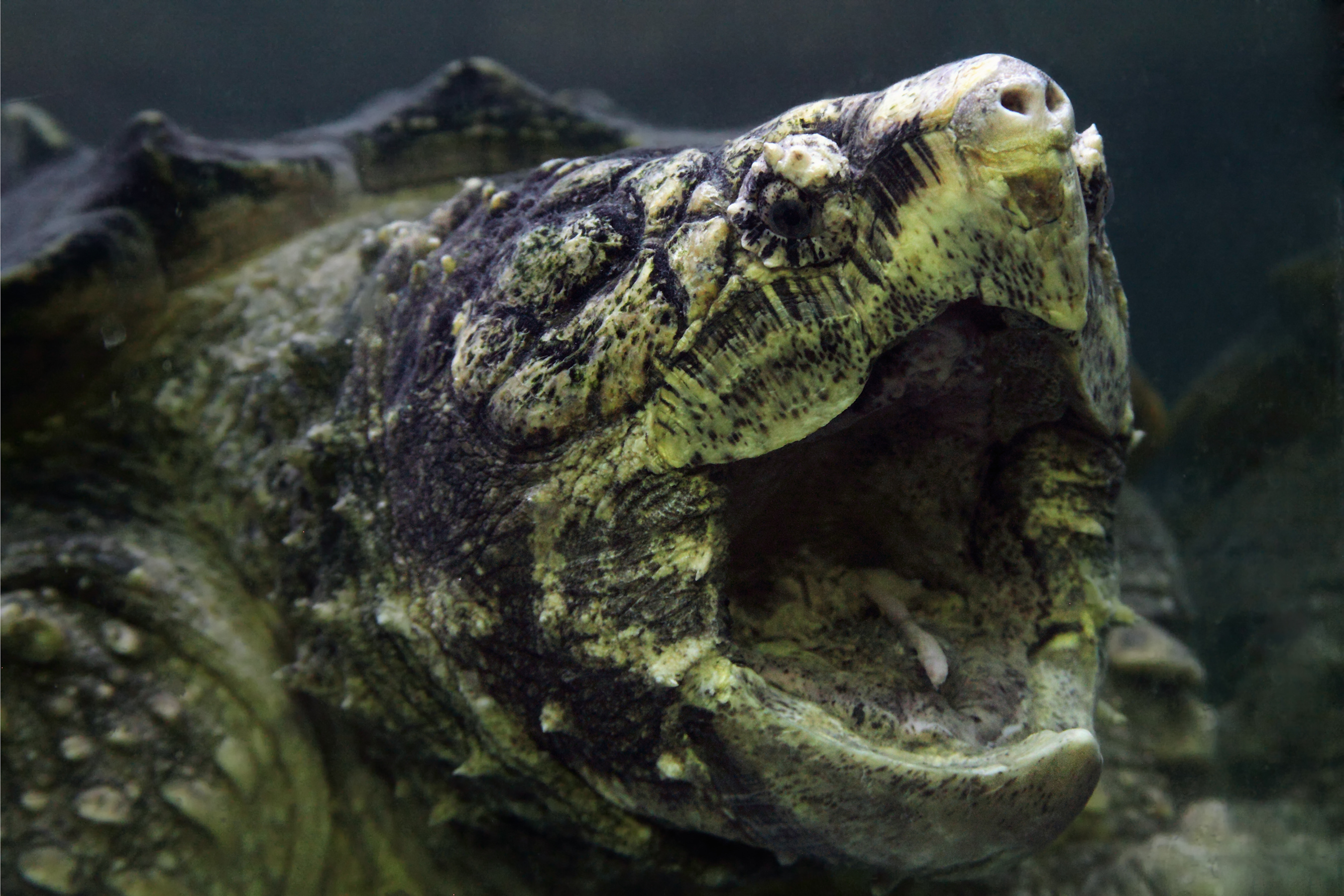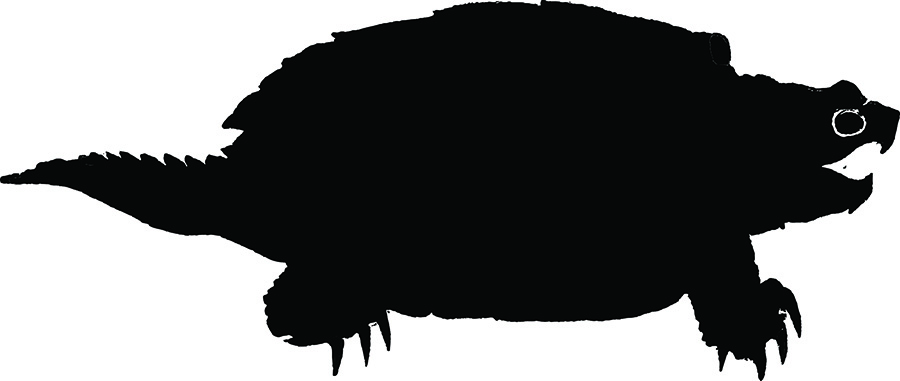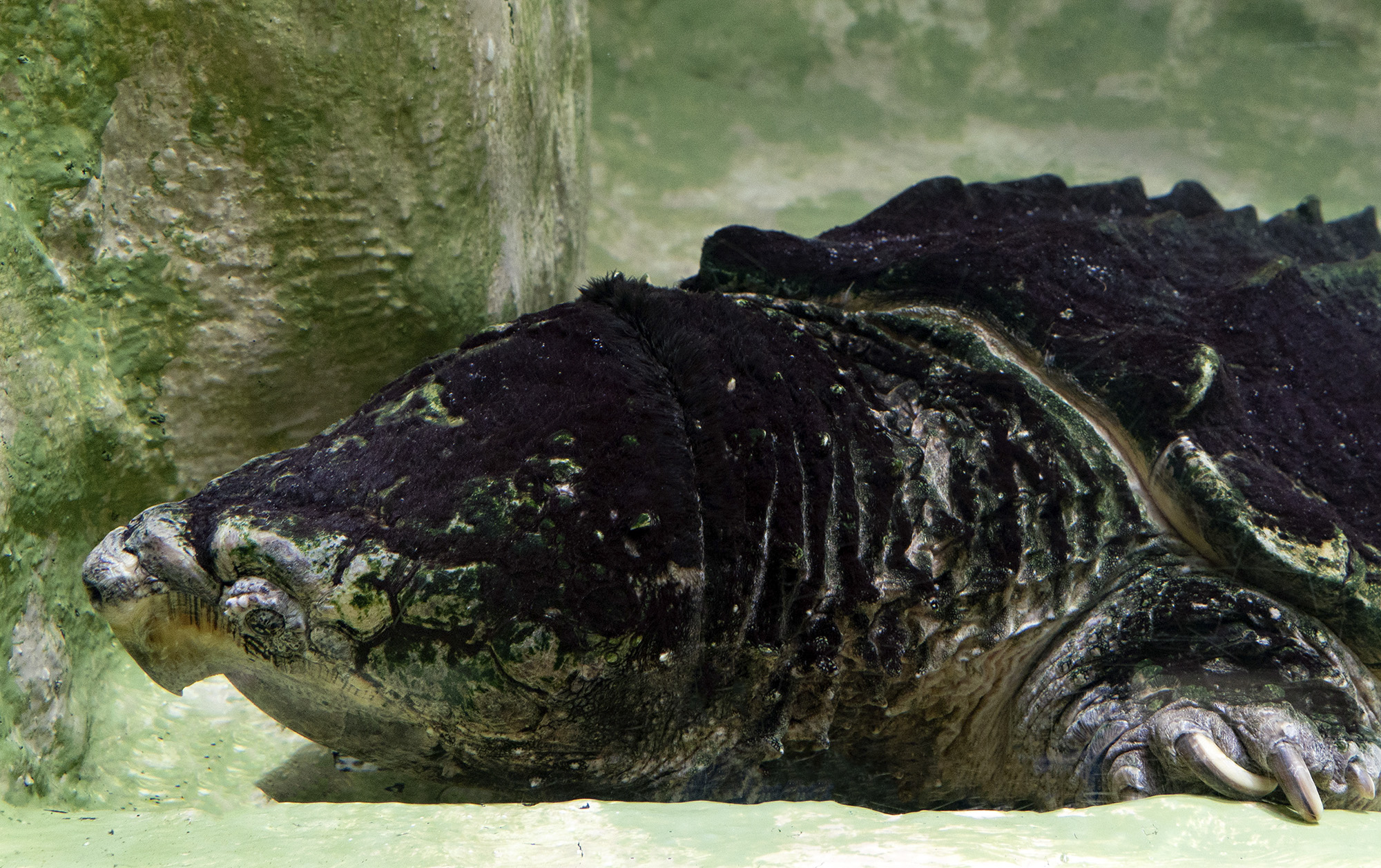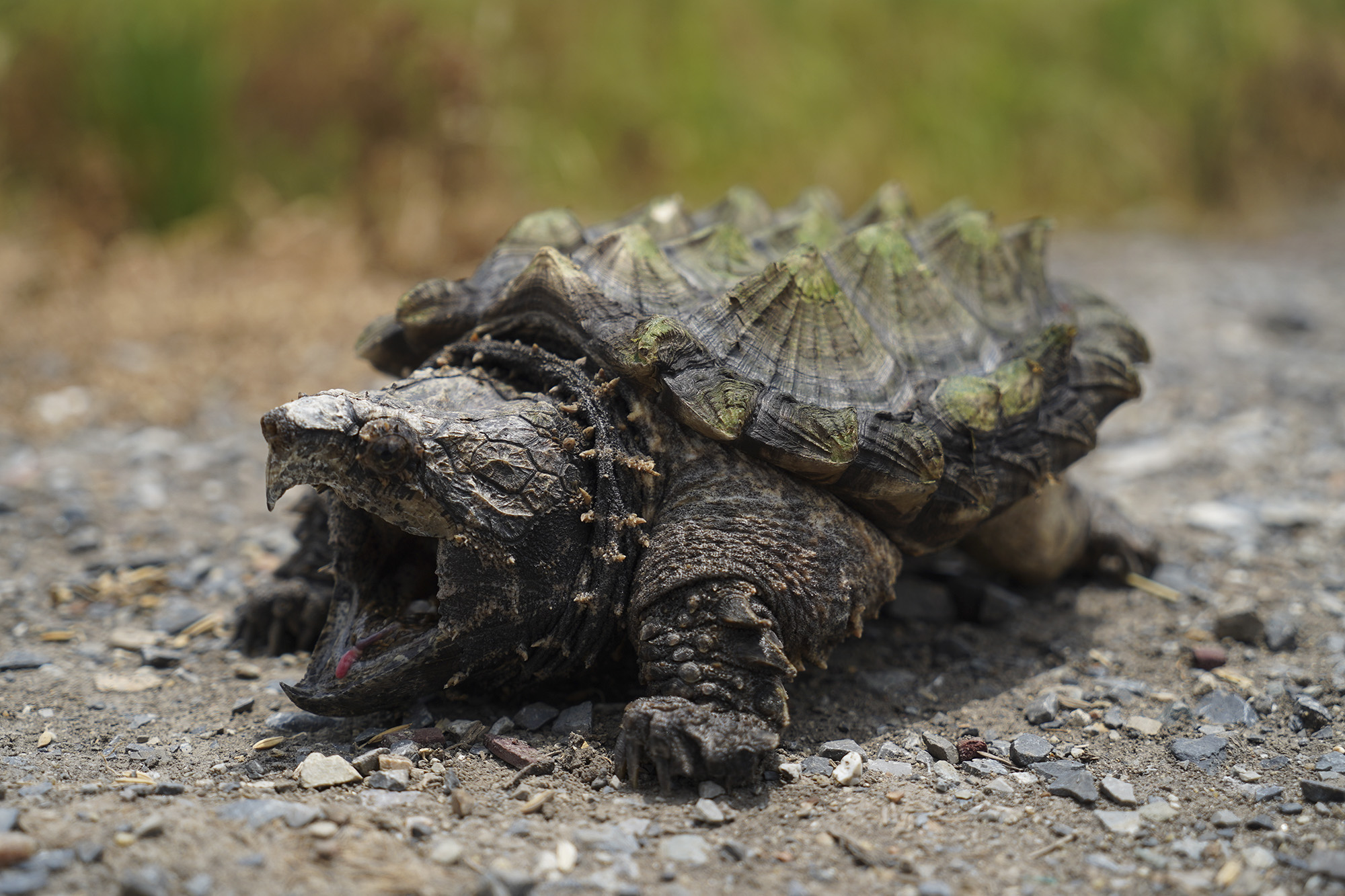Alligator Snapping Turtle
(Macrochelys temminckii)

Lower Mississippi River
STATISTICS
Length up to
80.8 cm
Weight up to
80 kg
Lifespan
70 Years
Powerful Jaws - Well Camouflaged
The Alligator Snapping Turtle is endemic to the southeastern United States, most typically occurring in freshwater habitats, such as rivers that drain into the Gulf of Mexico. It is one of the heaviest freshwater turtles in the world and is often associated with the common snapping turtle, although they are not closely related.
The Alligator Snapping Turtle derives its name from its immensely powerful jaws and long, spring-like neck, as well as the distinct ridges on its shell that are reminiscent of the rough skin of an alligator. Due to its primitive appearance, this prehistoric-looking species has the reputation of being the “dinosaur of the turtle world.”
To hunt, the Alligator Snapping Turtle utilizes a vermiform appendage on the tip of its tongue to lure fish in, before closing its trap with tremendous speed and force. This reptile is typically an opportunistic hunter that tends to strike at night. It feeds on live prey but also frequently scavenges. This species eats fish, mollusks, amphibians, snakes, crayfish, worms, water birds and aquatic plants.
The Alligator Snapping Turtle reaches maturity at 12 years of age. The female lays between 10-50 eggs in a nest away from the waters edge to prevent flooding. Incubation takes approximately 100-140 days and the eggs can fall prey to raccoon, large fish, and birds.
BIODIVERSITY BENEFIT
Prey Population Control - Nutrient Cycling
THREATS
Illegal Wildlife Trade
Collected as pets.
Hunting
Harvested for their meat.
Habitat Loss
Alterations in major rivers have created barriers to migration to suitable breeding habitat.

UNKOWN
Left in the Wild
PROTECT THE WILDARK 100


